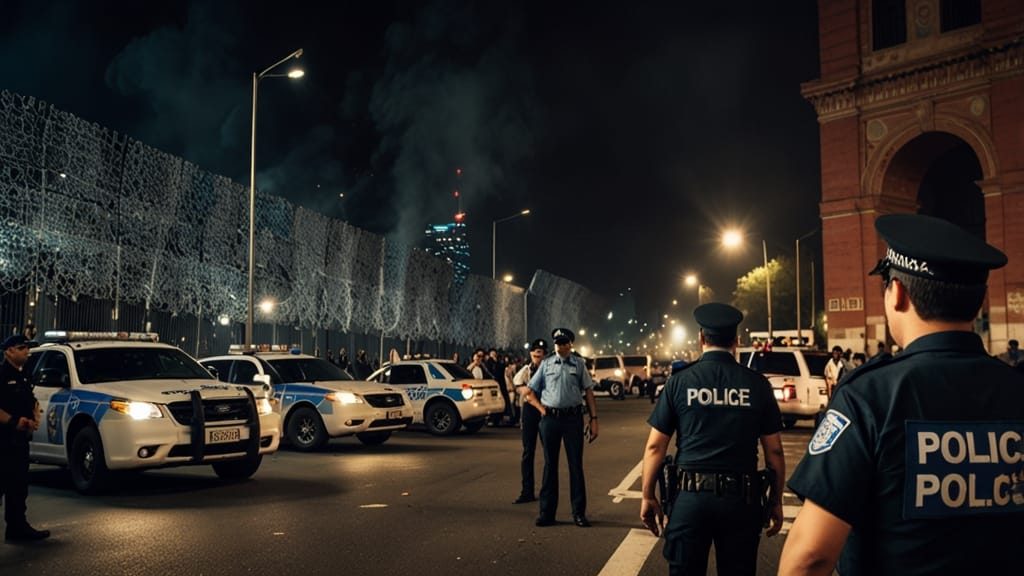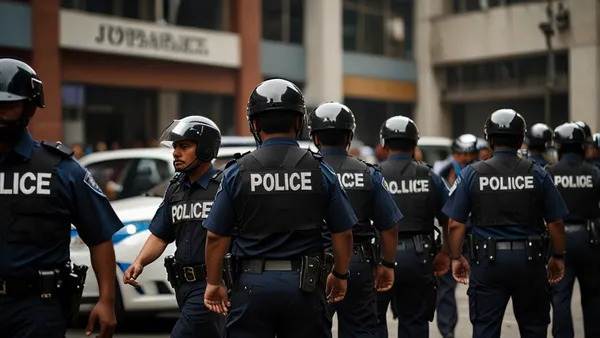You are not protected. You are pacified.
The badge you fund with your labor does not stand sentinel at the gates of danger—it loiters in traffic stops and paperwork. Less than 4% of a police officer’s time is spent on violent crimes or high-risk calls. The rest? It’s tickets, reports, and patrols through neighborhoods they were never invited into.
We’re sold a story: that every uniform is a shield between chaos and civilization. But when you trace the receipts—when you follow the money—you don’t find justice. You find bloated budgets, surveillance tech, military-grade weapons, and public servants who behave like kings.
If every taxpayer saw the pie chart of where their money goes, there would be riots in the streets. Not just for the theft of funds—but for the theft of imagination. We’ve been robbed of what that money could have built: housing, education, health, art, safety that doesn’t come with sirens.
The police state doesn’t hide. It parades. It narrates. And it survives because most people don’t ask the sacred question:
What else could we do with the truth?
🚓 Summary of Key Points
1. Framing Crime Narratives
- Lorenz explains how police departments strategically influence media coverage to focus on certain crimes, like shoplifting, while ignoring systemic issues such as wage theft or police misconduct. This selective amplification keeps public attention on issues conducive to policing budgets and authority.
- This manipulation fosters moral panics—temporary waves of disproportionate fear—triggering policy responses and funding increases for law enforcement teenvogue.com.
2. The Mechanics of “Copaganda”
- The term “copaganda” refers to the uncritical transmission of police messaging. This includes humanizing stories, glossing over misconduct, and presenting law enforcement as unambiguously heroic.
- Departments proactively foster relationships with journalists, providing vetted content, staged events, and ready-made quotes to shape public perception .
3. Selective Anecdotes and Cherry-Picked Stories
- Lorenz cites examples—like NPR’s coverage of rising shootings—where isolated incidents or quotes from individuals are amplified without broader context. Often, these quotes serve the police narrative (“defund the police” blamed for rise in crime) without offering data that contradicts it teenvogue.com.
- These anecdotes create false narratives—the police might be underfunded, crime is mysteriously up—even when statistical evidence disputes such conclusions .
4. Consequences of Copaganda
- Such coverage leads to policy implications: legislators increase funding, push punitive laws, and expand police and prison systems—often at the expense of social programs .
- The result: endless cycles of enforcement expansion that do little to address root causes like inequality, poverty, and community disempowerment .
5. Technological Tools in Policing the Narrative
- The video touches on how AI and digital monitoring add layers to media control and surveillance—creating an environment where both crime and crime narratives are increasingly data-driven but storytelling remains carefully curated.
🔍 Broader Context & Takeaways
- Lorenz places her analysis within a wider historical pattern of institutional PR—from Victorian-era police dramas to modern viral videos—showing how narratives are weaponized .
- The core message: true vigilance and accountability require skepticism of crime narratives—not trust in ever-present but selectively reported policing efforts.

🔍 1. How to Identify Copaganda in Everyday News
🔦 Tell-Tale Signs:
- Uncritical Reporting: Are police statements published without counterbalance, context, or verification?
- Emotive Humanization: Are officers portrayed as community heroes in stories unrelated to misconduct or abuse?
- Crime Panic vs. Data: Does the headline suggest a crime wave—but the data inside tells a different story (or no data at all)?
- Victim Blaming or Erasure: Are victims of police actions dehumanized, criminalized, or absent from the narrative?
- “Just Doing Their Job” Tropes: Are violent or overreaching actions excused as procedural or necessary?
🛡 Techniques for Resistance:
- Cross-reference stories with local watchdogs or independent outlets.
- Ask: Who benefits from this narrative? Who gains power, money, or permission?
- Look for patterns—are certain crimes amplified while others (like wage theft or police corruption) are buried?
📜 2. The Political Economy of Crime Reporting
💰 Follow the Budget:
- Local news outlets often depend on press releases and police access for quick stories. This creates a dependency loop—don’t bite the hand that feeds.
- Police PR departments are publicly funded narrative machines, often better equipped than local journalism teams.
- Politicians and media both benefit from fear-driven headlines, which justify more policing and surveillance infrastructure.
🔥 Weaponized Fear:
- Coverage of minor crime spikes (like shoplifting) triggers mass moral panic. But what about: These are often underreported or sanitized because they challenge power.
- Billion-dollar wage theft?
- Corporate pollution?
- Police brutality?
🧠 3. Moral Panics as Control Mechanisms
⚠️ What Is a Moral Panic?
- A sudden, intense fear that a particular group (youth, protestors, immigrants) threatens social order.
- Driven not by evidence but emotion and media narrative.
- Used historically to justify:
- War on Drugs
- Mass incarceration
- Anti-immigration laws
- “Broken windows” policing
🪞 Reality Check:
- Ask: Is this truly a new problem, or a recurring fear?
- Example: The rise in “violent teens stealing from stores” stories ignores decades of data showing that youth crime has steadily declined.
⚔️ 4. Deconstructing the Copaganda Industrial Complex
⚙️ Institutional Symbiosis:
- TV shows, news media, social platforms all amplify a vision of police as the thin blue line.
- Hollywood and cable romanticize detective work, conceal systemic abuse.
- Influencer cops (on TikTok, Instagram) curate public personas, deflecting from real scrutiny.
🔥 Cultural Counterattack:
- Expose and meme-ify the tropes (e.g., the “hero cop who broke protocol to save a child”).
- Elevate alternative voices: local activists, community defenders, victims’ families.
- Build and share narratives of self-defense, mutual aid, and sovereignty—without appealing to state violence.
🧠 In Summary
Taylor Lorenz’s “How Police Control the Media” is a powerful critique of the symbiosis between law enforcement and the news industry. By spotlighting how stories are curated, which voices get heard, and which facts get omitted, Lorenz urges viewers to question who decides the narrative, whose fear it serves, and what structural change remains neglected.




